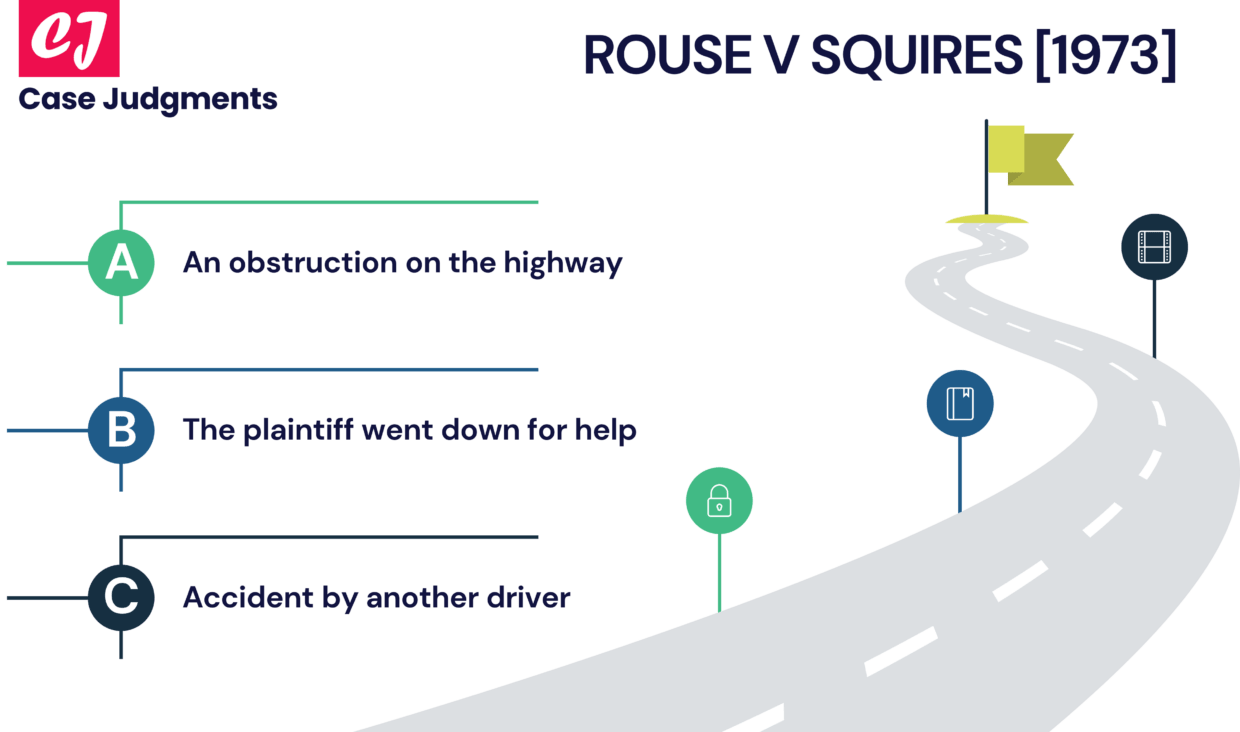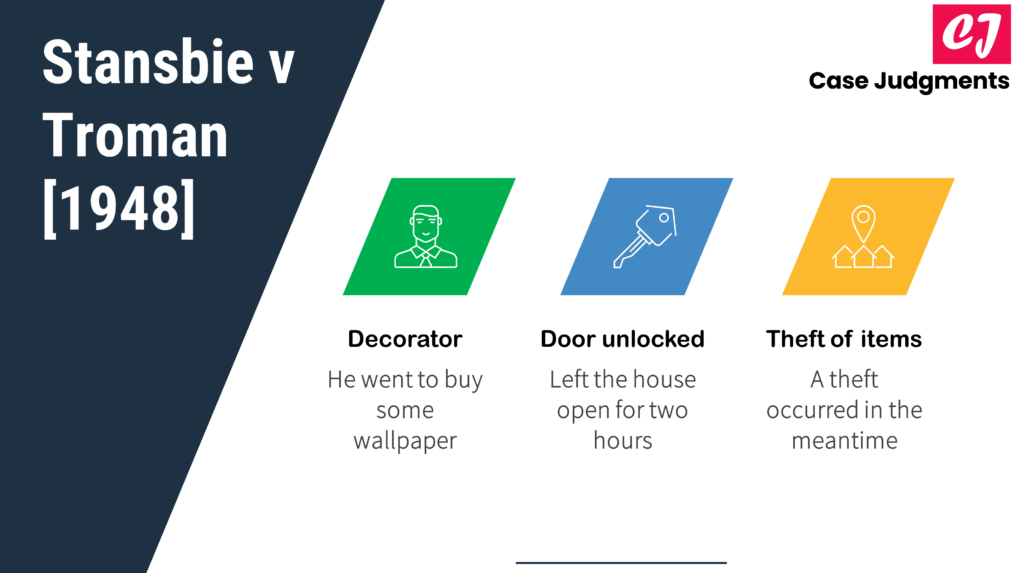
Rouse v Squires [1973]: A Case Summary
Case name & citation: Rouse v Squires [1973] 2 All ER 903; [1973] QB 889
- Court and jurisdiction: Court of Appeal, England and Wales
- Decided on: 22 March 1973
- The bench of judges: Lord Justice Buckley, Lord Justice Cairns and Mr. Justice Mackenna
- Area of law: Causation; novus actus interveniens
What is the case about?
Rouse v Squires [1973] is a UK tort law case that concerns a situation where one negligent act follows another. Can the subsequent incident break the chain of causation between the original one and the injury sustained as a result?
Facts of the case (Rouse v Squires)
The defendant (Edward Allen) was a lorry driver who was driving negligently. His lorry skidded into a jack-knife position and it blocked two lanes of a motorway. The plaintiff (Rouse) saw the obstruction, parked his own lorry in the nearside lane, and went on to provide assistance at the scene. He was killed when another lorry driver (Kevin Squires) negligently drove into the obstruction.
The widow of Mr. Rouse brought an action against Mr. Squires. Mr. Squires was admittedly negligent as he was driving too fast in frosty conditions. The action was compromised by the payment of £16,000. However, Mr. Squires initiated third-party proceedings against the owners and driver of the lorry that had caused the obstruction in the first place, alleging that they were at least partially responsible for the accident.
Issue that arose
Was the first lorry driver (the defendant) liable for the death of the plaintiff?
Or did the second incident break the chain of causation?
Judgment of the Court in Rouse v Squires
Even though the other lorry driver (Kevin Squires) was negligent in his driving, this did not break the chain of causation that connected the original incident & the negligent driving of Mr. Allen to the death of the plaintiff. It is reasonable to assume that a driver who causes an obstruction should have been able to foresee the possibility of other drivers negligently colliding with the obstruction and causing additional accidents.
The defendant as well as the subsequent driver, Squires had each made a significant contribution to the indivisible injury that had been caused. In accordance with the Civil Liability (Contribution) Act 1978, the court apportioned the liability for the incident among both of them. It was held that the defendant (Allen) was one-quarter to blame.
Quotes from the case
McKenna J said:
“We have been referred to a number of cases where two parties were guilty of negligence and it was argued that the negligence which was subsequent was the sole cause of the accident. I deduce this rule from the cases. Where the party guilty of the prior negligence has created a dangerous situation, and the danger is continuing to a substantial degree at the time of the accident, and the accident would not have happened but for this continuing danger, he is responsible for the accident as well as the party who was subsequently negligent.”
List of references:
- https://www.gov.bm/sites/default/files/SC1503-D-Brown-v-B-Levon-et-al-2015-SC-Bda-20-Civ-16-March-2015.pdf
- https://www.lawteacher.net/free-law-essays/contract-law/causation-factual-cause-of-defendants-loss-actions-law-contract-essay.php
- http://www.bitsoflaw.org/tort/negligence/study-note/degree/damage-causation-factual-legal
- https://vlex.co.uk/vid/rouse-v-squires-793015521
You might also like:
More from tort law:

